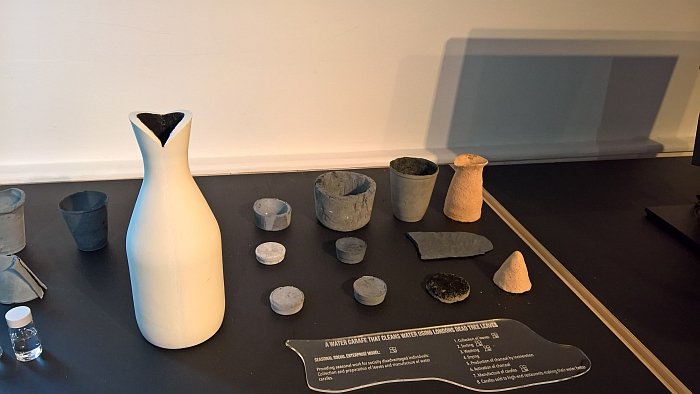As an institution London’s Royal Albert Hall teaches us that regardless how illustrious and prestigious your history may be, you can never rest on your laurels, you are only ever as relevant and interesting as your next programme, as your next soloist..
With the 2017 Graduate Show the Royal Albert Hall’s next door neighbour, the equally illustrious and prestigious, Royal College of Art unveiled its 2017 programme and 2017 soloists.
But would there be a standing ovation…
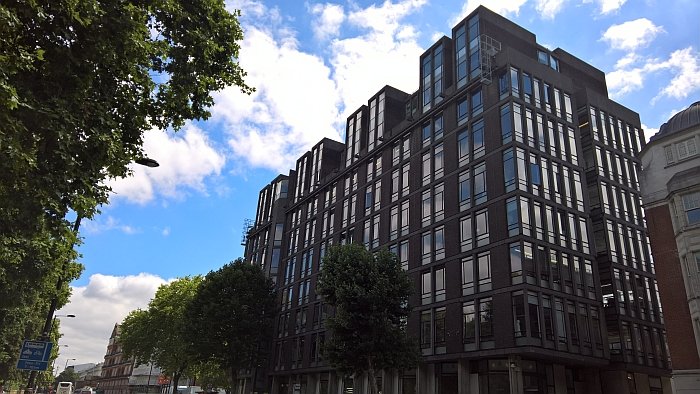
Whereas many design schools began life as art/applied art/craft schools before evolving design tendencies, the Royal College of Art, RCA, London opened in 1837 as the Government School of Design with a specific mandate to promote an understanding of the principles of design, before becoming an art school. And that, somewhat counter-intuitively in 1853, so after the 1851 Great Exhibition in London which had highlighted and promoted the industrial advances of the age, and thus the need for industrial designers. Funny folk the English.
The change of name and focus didn't however mean that design wasn't further taught, and from the largely Arts and Crafts dominated programmes of the late 19th century the RCA began formally teaching product, industrial and graphic design from the late 1940s, courses of studies which have continued to expand and evolve over the decades.
Thus while the RCA stands synonymous with the development of art throughout the 19th, 20th and 21st centuries, among its alumni it can count the likes of Henry Moore, David Hockney and Tracey Emin, the RCA has also long been an important centre of design eduction producing designers of the calibre of, and amongst many, many others, Robin and Lucienne Day, Jasper Morrison, or Edward Barber and Jay Osgerby aka Barber Osgerby.
A purely postgraduate institution, the Royal College of Art Design School currently offers programmes across a range of creative disciplines including Service Design, Textile Design, Innovation Design Engineering and Design Products.
The Royal College of Art Graduate Show was arguably the most sobering moment of our #campustour. Whereas an exhibition such as the Schwäbisch Gmünd Rundgang provided food for thought as to how our autonomous, smart, networked digital future could look, as it were, gently massaged our cognitive faculties, the RCA show caused us to break out in a cold sweat. We don't remember shivering but it wouldn't have surprised us. Despite the warm London sun.
Or put another way: in a world controlled by RCA graduates every, but every, aspect of our lives will be controlled by autonomous smart technology. We will literally lose the ability to think for ourselves. The human brain will become the appendix of the 21st century.
One project in particular perfectly summed up for us the spirit of the position presented at the RCA Graduate Show, we're not saying which project because we don't want it to look like a witch-hunt, which it isn't, it's one example from many, but it proposed "an autonomous socialising tool that stimulates people to explore divergent analogue interactions"
An algorithm that guides analogue interaction and conversation.
What's not to like?
Assuming it is satire.
Assuming it is seeking to pour scorn and ridicule on much of what is currently being proposed.
Assuming it is a cleverly conceived warning against the absurdity of assuming technology is always the best way forward.
If you read about such in The Hitchhiker's Guide to the Galaxy you'd chuckle warmly to yourself over your ale at the sharpness of Douglas Adams' wit and neatly observed cultural criticism......
But it's real. The RCA are really proposing a future in which human beings have the lost the ability to hold and develop a conversation.
Yes one must, as with all projects, separate the work that went into developing it, both technical and theoretical, the processes that were developed and the advances in understanding made, from the end result. And although fully unaware of the facts, we see absolutely no reason to question the skill and competence with which the project was developed and realised. Nor the fact that the experience gained through the project may provide for meaningful developments in other directions, in other projects
What terrifies us is that such a project is considered worthy of pursuing.
And we're honestly not picking on that one project, rather it stands representative for many of the RCA's digital projects, and also for a similar situation in the vehicle design department where on the one hand you had all these super high-tech, super shiny, always shiny, futuristic vehicle designs, and on the other projects which pose the question "how can we bring emotion and empathy into autonomous cars".
By not taking it away?
By understanding that what makes life such a joy is spontaneity, uncertainty, emotion and imperfection. That we are not only tactile beasts but curious, that we enjoy making connections, learning by doing, trying new things and even getting lost and getting it wrong.
Why would we want that taken away from us? Be it by a car that makes us superfluous cargo or an algorithm that guides our conversations.
But no, in an RCA future our world will be stripped of natural emotion, reason, individuality and chance; thankfully, designers will be on hand to bring such back with autonomous, smart systems and algorithms.
What's not to like?
Fortunately there were also a few projects which weren't geared towards the annihilation of all that makes being a human such a joyous, sensuous, motivating and inspiring experience......
For 200 years the bicycle has allowed for democratic and independent transport.
Horizontally.
The question is why did it take 200 years for the same to be allowed vertically?
A bicycle is, and with apologies to all you bike fetishists out there, nothing more than a housing for a series of chains and cogs which allow for the transformation of circular movement into linear.
Reconfigure the chains and cogs, re-imagine the housing and you have Vycle - a bike elevator.
A stupidly simple idea and one perfect for our modern world where we all know we sit too long and should move more. Why take the conventional lift at work when you can cycle the two floors to the accounts department?
A human powered system Vycle not only encourages movement but saves both electricity and the resources necessary to install a conventional lift, while bringing a bit of fun and harmless distraction into any space: whereby, while it is obviously perfectly suited for all those multi-billion dollar, pan-national tech conglomerates who enjoy using interior design to pretend their achingly hip start-ups, we can also well imagine Vycle working just as well in a wide range of commercial and public locations, or indeed as a domestic solution.
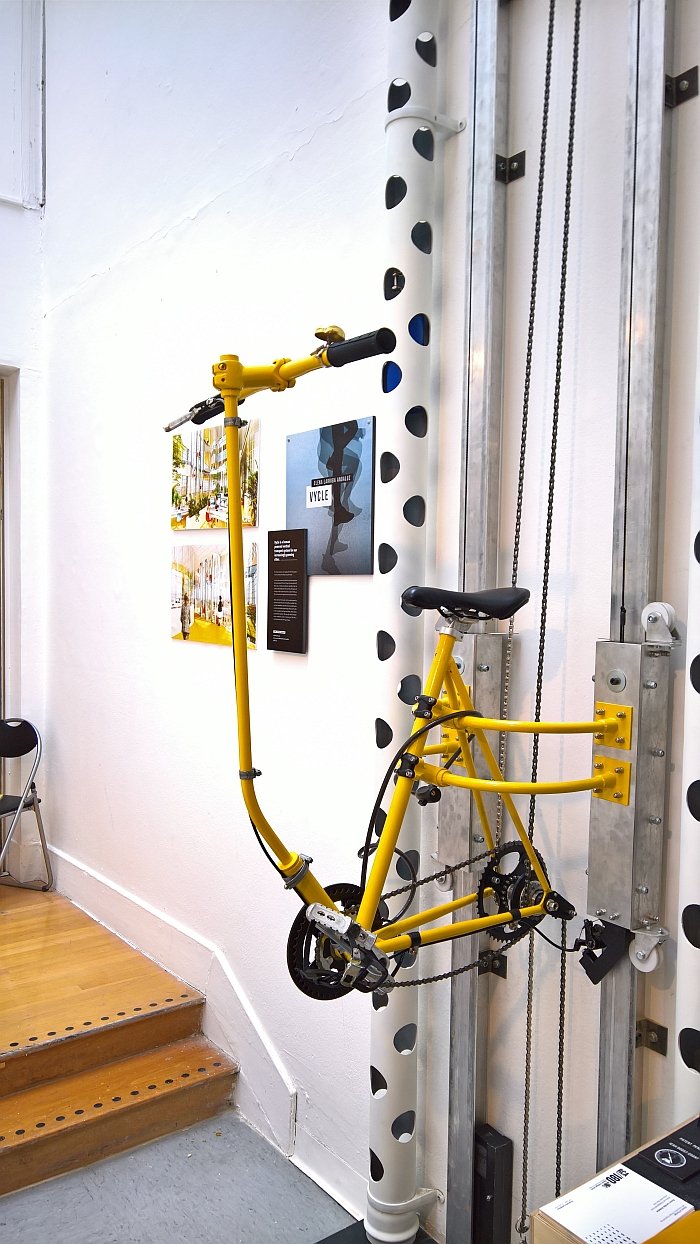
Prevention is always better than cure, however as a species we are far to egoistic, and plain dumb, to understand that and act accordingly; consequently, and as noted above, we spend a lot of time developing cures for the ills we have caused.
Plastic in oceans is an excellent example. On the one hand the larger plastic items currently forming themselves into new landmasses and on the other the smaller pieces which poison marine life and generally upset the balance of the marine environment.
A clean up is necessary, but how to get the smaller bits of plastic?
With Remora Robert Rouse proposes a system which, much like the Basking Shark, swallows vast quantities of water and filters the plastic out as the water passes through it, much as the shark filters zooplankton.
Which certainly has all the hallmarks of being an elegant solution to a pressing problem, even more so because in addition to plastic removal, Remora also allows for the possibility of generating energy, either for propulsion to move it to new areas, or for feeding into a wider energy grid.
As we say, all the hallmarks of an elegant solution and one who's development we are looking forward to following.
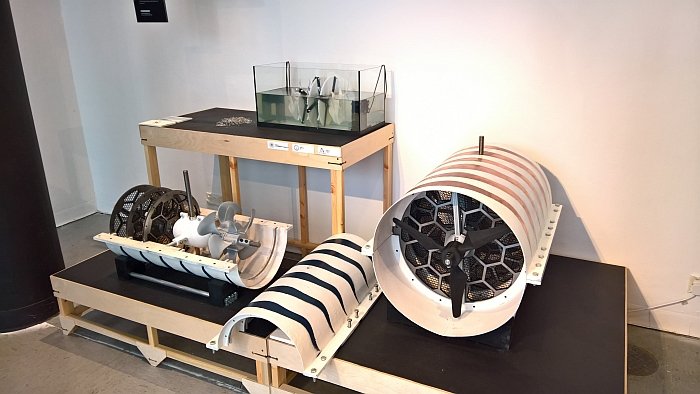
Conceived as a family of furniture to satisfy the needs of workers in what Kornpetch refers too as "in-between" spaces, so those locations other than your office where you may temporarily find yourself working, the highlight of Landing Space for us was the chair.
And not necessarily because of the way it met such a brief. But much more for the fulsome backrest, a backrest which allows it to be used as a perch or indeed an impromptu ledge for a laptop or taking notes. Thus neatly combing several functions in a pleasingly unobtrusive and neatly proportioned object, and one which also fulfils the requirements for "soft ergonomics" in contemporary office spaces.
Equally pleasing, and very much in keeping with the stated aim, is the charging station: the small tables provide the necessary practicality in a clearly defined and structured object, even if we would wish for a form that was a little less rigid, something that implied, and offered, a little more flexibility. And yes, we also like the plant pot atop.
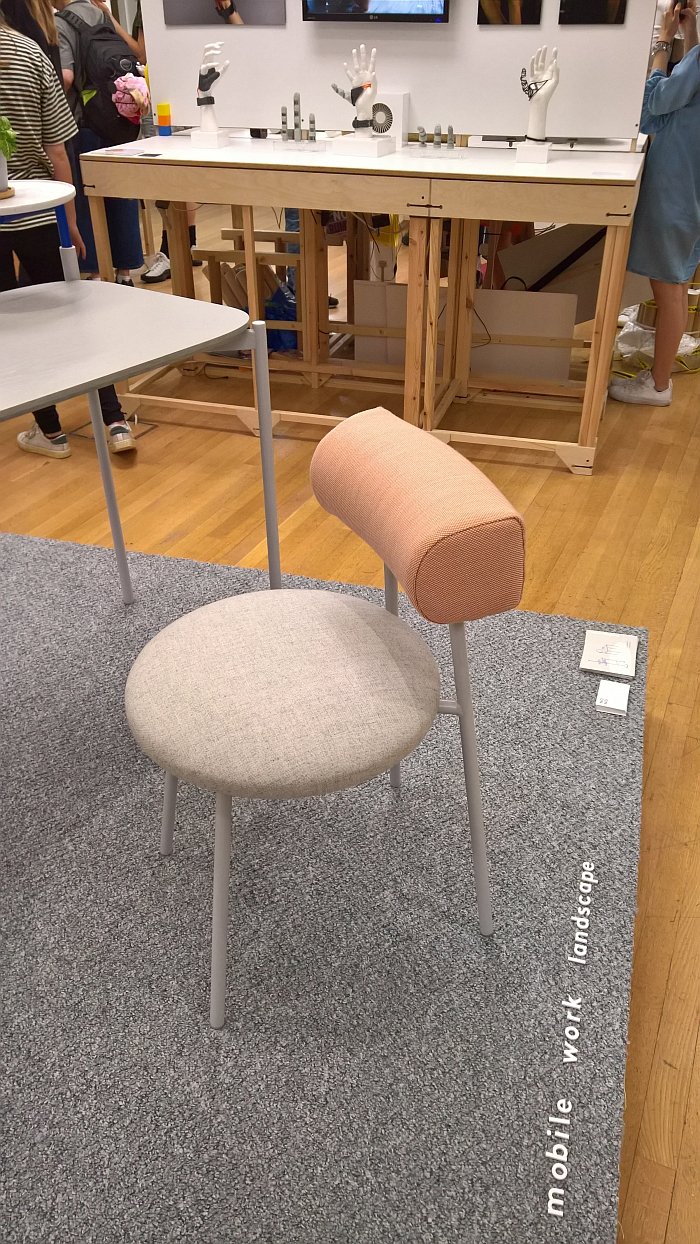
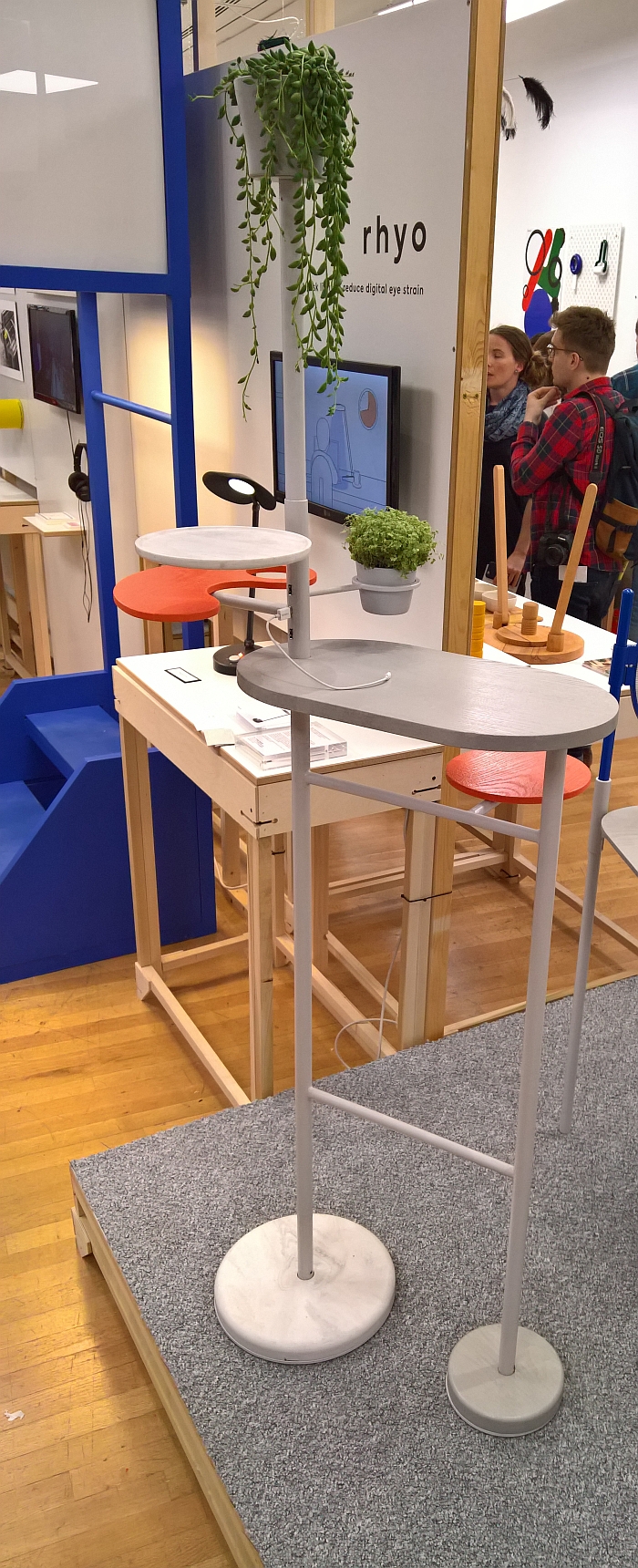
Arguably because we're getting older, and our joints have certainly been seizing up with an alarming regularity on our #campustour, Stairbility by Nathan Chang really appealed to something within us.
While a walking stick is an excellent and practical aid, it has its limitations, or perhaps better put, reaches the outer limits of its practicality when confronted by particular situations. Not least stairs: the user having to take hold of the handrail in one hand and stick in the other, which isn't necessarily an optimal position.
Stairbility offers a solution whereby a claw like device attaches to the hand rail, securing stick and user and thus allows for safe, secure stair use
Yes it does, by necessity, mean a little bit of messing about before ascending or descending stairs, but that is surely a small price to pay for the added stability and security, and yes does require that the user can trust it blind, and does also assume that all handrails are suitably, and similarly, constructed, but otherwise is a very appealing solution. By which we think we mean, encouraging start but a bit more development necessary.
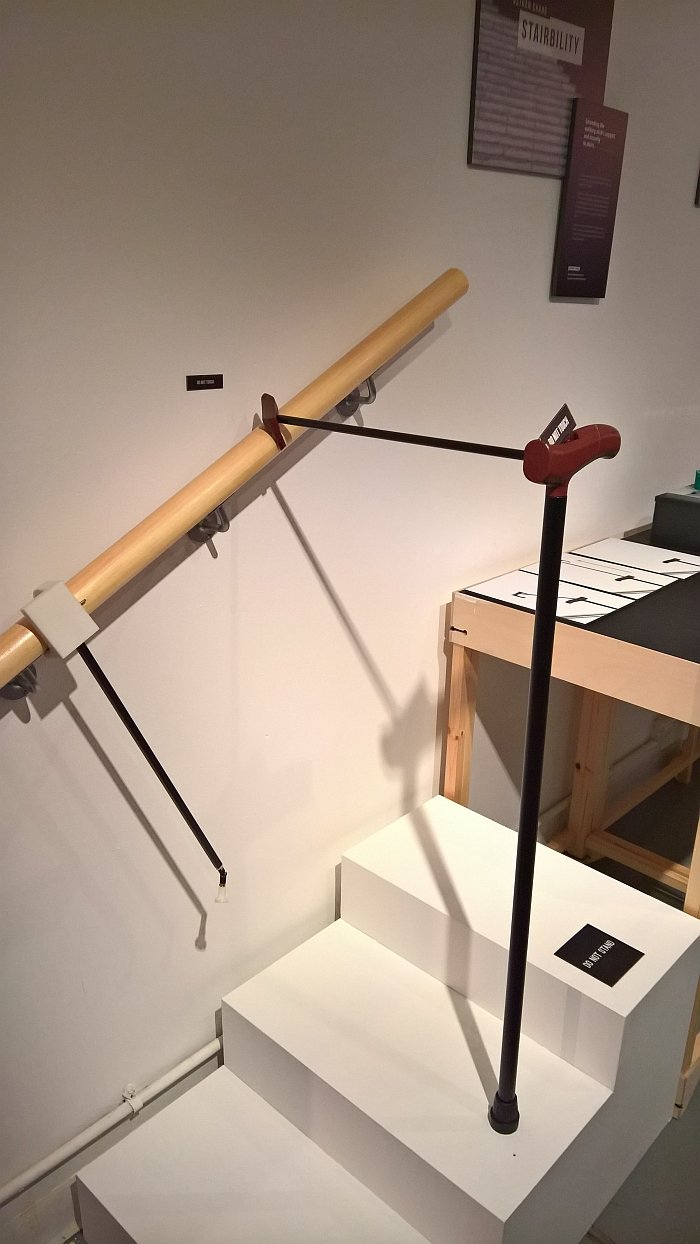
While we have never bought into the concept of the Urban Nomad, society is becoming increasingly mobile, be that the enforced mobility of refugees, homeless or those others who find themselves involuntarily outwith conventional norms or those voluntary nomads, both those whose work means that they are regularly on the road, be it construction workers and tradesmen following contracts or artists, musicians and other creatives following contracts, or those who employ the benefits of modern communications to allow their work to follow their whims and the agreeable weather.
Yet as Chih Chiu explains, whereas lifestyles are changing civil society's structures and institutions aren't, and the permanent address remains the basis of its understanding of the world.
No permanent address = No nothing.
With the project No Fixed Abode Chih Chiu decouples your current physical location from your permanent address in that your permanent address becomes a personal "postcode". A physical GPS based device links this personal postcode to a central system and when you bed down at a new location you "register" and then everybody knows that you are there and you can continue doing all those things a permanent address allows.
While yes there is more than a hint of digital control, of the authorities needlessly being permanently aware of your movements, in many countries you have to register with the local authorities, No Fixed Abode is just another form; and also as Chih Chiu states most of those who live mobile aren't seeking to hide or be invisible, just have either selected a lifestyle that doesn't require a fixed address, or through circumstance find themselves without one, be that long or short term. Want however to be fully functioning, and contributing, members of civil society.
Despite that we'd argue the GPS device is taking things too far, it is surely enough if whenever you are asked to enter your address, you enter your personal postcode. For example, when ordering goods online, billing address is your postcode and delivery address is where you actually are. And on all official documents the postcode is your address. A postcode which is unique, permanent, centrally registered and thus as checkable as a registered permanent address, and accepted as equivalent when for example opening a bank account, applying for a credit card or registering for health insurance.
Or put another way, for us the project is the separation of residence and address.
And a delightfully refreshing one it is at that.
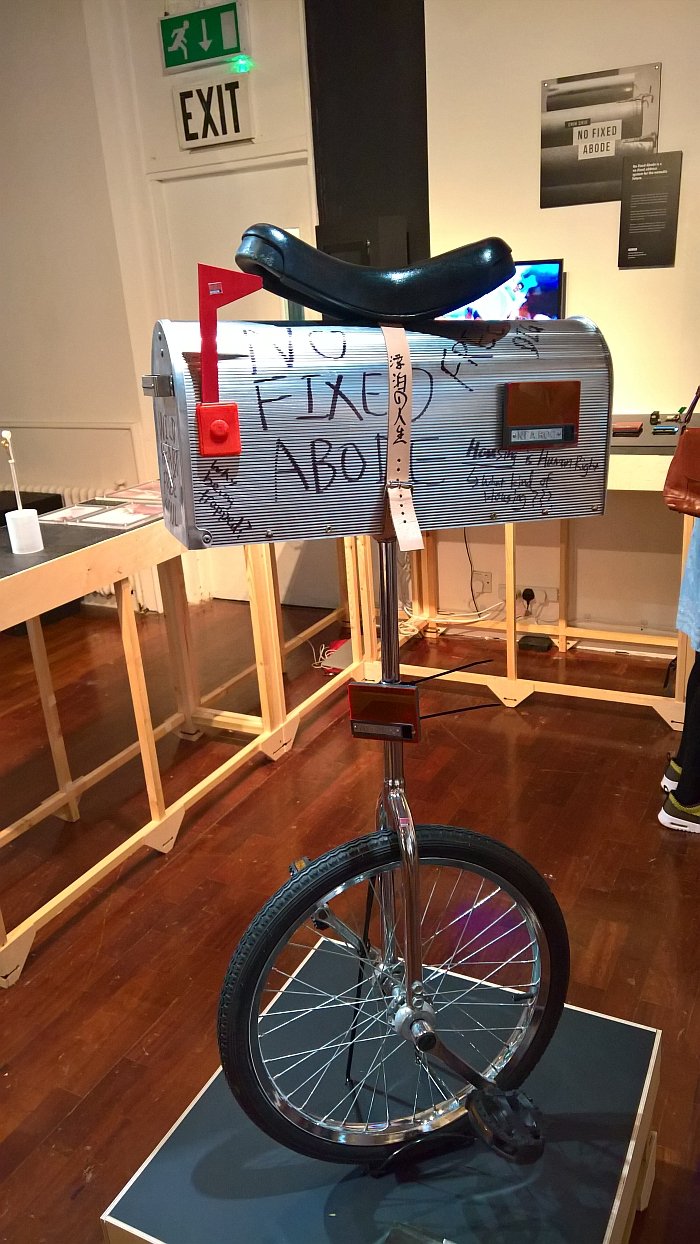
Activated carbon is currently very much en vogue and there is hardly a product genre that isn't touched by its magic. Even if the science behind much of the magic owes more to the smoke and mirrors of the end-of-the-pier -show than it does to actual real science. There are however situations in which activated carbon genuinely is useful and sensible, the question is one of production. Of from where the base carbon comes.
With her Masters project Alice Miksova proposes using fallen leaves as a raw material, and arranging the collection and processing through a social enterprise model and thus transforming a genuine problem for many communities into a sustainable, local resource.
Specifically Alice proposes using the thus won activated carbon for carafes to help improve water quality, which while we're not completely opposed to, we would argue there is a little bit of the old smoke and mirrors involved: tap water in Europe is unlikely to be significantly improved by a carafe lined with activated carbon. Marginally perhaps, but.... However for us the model developed for collecting and processing is the key to project, and that would appear to make a lot of sense.
Full details on the Royal College of Art Design School can be found at www.rca.ac.uk and full details on the 2017 graduation projects can be found at www.rca.ac.uk/showcase
